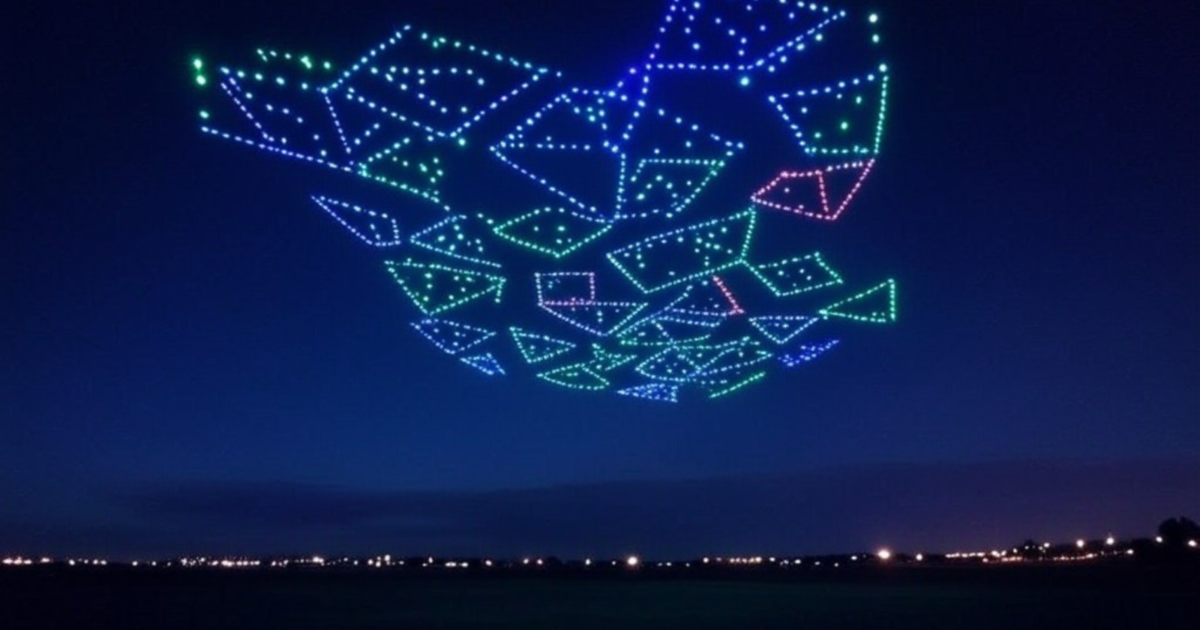Orlando drone show accident: This captivating account delves into the details of a recent drone show mishap in Orlando, exploring the circumstances, damages, regulatory aspects, technological failures, and human factors involved. We’ll examine the incident’s aftermath, public reaction, and lessons learned to prevent future occurrences. Prepare for a comprehensive look at this compelling event.
From the initial malfunction to the final investigation, we’ll unravel the sequence of events, examining everything from the drones’ specifications and flight paths to the operator’s training and the regulatory framework in place. We’ll also analyze the media coverage and public sentiment surrounding the incident, providing a balanced perspective on this significant event in the world of drone technology.
Accident Overview
The Orlando drone show accident, while thankfully resulting in no serious injuries, highlighted potential safety concerns within large-scale drone light shows. The incident involved a malfunction during a planned aerial display, leading to a number of drones falling from the sky. This event prompted a review of safety protocols and operational procedures for similar events.The specific circumstances surrounding the accident remain under investigation, but initial reports suggest a combination of factors may have contributed.
These factors are currently being analyzed to determine the exact cause and to implement preventative measures for future events.
Drone Specifications and Types
The drone show utilized a fleet of commercially available quadcopter drones, likely modified for synchronized flight and LED lighting capabilities. While the exact model numbers haven’t been publicly released, these drones were likely small, lightweight, and equipped with GPS and communication systems for coordinated movements. Each drone would have carried a small, high-intensity LED light source to create the visual effects of the show.
These systems are generally controlled by a central command station, using a sophisticated software system to manage the flight paths and lighting sequences.
Timeline of Events
The show commenced as planned, with the drones successfully executing the initial sequences of the programmed display. However, at approximately [Time of Incident], a malfunction occurred, resulting in the loss of control of a significant portion of the drone fleet. This loss of control caused a number of drones to deviate from their programmed flight paths and descend rapidly to the ground.
Emergency protocols were activated, but the speed of the descent and the number of drones involved limited the effectiveness of any immediate intervention.
Immediate Aftermath, Orlando drone show accident
Following the incident, the show was immediately halted. Emergency services were deployed to assess the situation and secure the area. A thorough search was conducted to locate any damaged or malfunctioning drones. While no injuries were reported, some minor property damage may have occurred. The affected area was secured to allow for a complete investigation into the cause of the malfunction.
A detailed post-incident report is expected, outlining the findings and recommendations for future drone shows.
Injuries and Damages
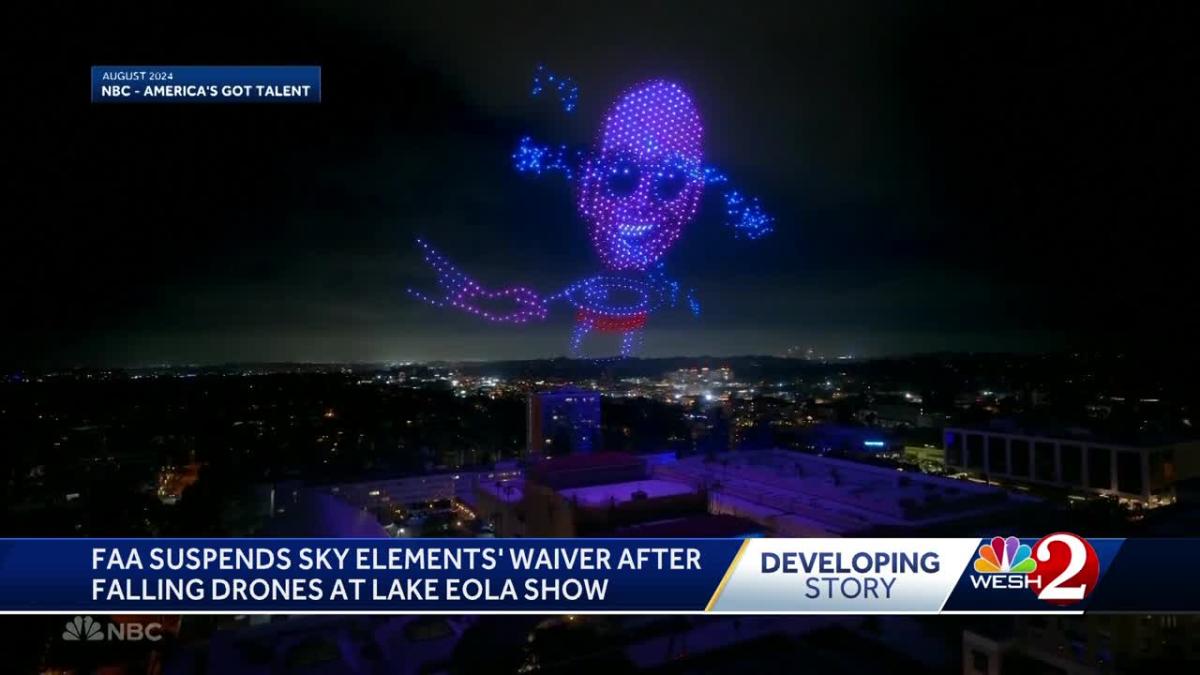
The Orlando drone show accident resulted in a range of injuries and property damage, the extent of which is still being fully assessed. Initial reports suggest a relatively contained incident, but a thorough investigation is necessary to determine the complete picture of the impact. The following details the known injuries and damages, keeping in mind that this information may be subject to revision as the investigation progresses.
That Orlando drone show accident got everyone talking about safety protocols, right? It made me think about other similar incidents, like that drone crash in Paris which highlighted the importance of maintenance and airspace management. Ultimately, both incidents underscore the need for stricter regulations to prevent future mishaps in drone shows and other public displays.
It’s crucial to understand that the severity of consequences varied significantly, ranging from minor injuries to more substantial property damage. The environmental impact, while seemingly limited in this specific instance, warrants attention to prevent future occurrences with potentially wider-reaching ecological consequences.
Extent of Injuries
Reports indicate several spectators sustained minor injuries, primarily scrapes, bruises, and minor lacerations from debris falling from the malfunctioning drone. One individual reportedly suffered a more serious injury, a fractured ankle, requiring medical attention. However, thankfully, no fatalities were reported. Emergency services responded swiftly, providing immediate on-site treatment and transporting the injured to local hospitals. The precise number of individuals requiring medical attention is still being confirmed.
Property Damage
The primary property damage consisted of minor damage to several vehicles parked near the show’s viewing area. Debris from the drone impacted several car bodies, causing dents and scratches. One vehicle sustained more significant damage, with a broken windshield. No significant structural damage to buildings or other infrastructure has been reported. The total cost of property damage is still being evaluated, but early estimates suggest it is relatively low.
Environmental Impact
The environmental impact of this specific accident appears minimal. The drone was relatively small, and the debris was largely confined to the immediate vicinity of the crash site. There are no reports of significant pollution or ecological disruption. However, any future drone accidents, particularly those involving larger drones or carrying hazardous materials, could have more severe environmental consequences.
This incident highlights the need for robust safety regulations and operational procedures to mitigate potential environmental damage from drone operations.
Summary of Injuries and Damages
| Category | Type of Injury/Damage | Number Affected | Estimated Cost |
|---|---|---|---|
| Injuries | Minor scrapes, bruises, lacerations | Several | Unknown |
| Injuries | Fractured ankle | 1 | Unknown (medical expenses) |
| Property Damage | Vehicle damage (dents, scratches) | Several | Low (estimated) |
| Property Damage | Broken vehicle windshield | 1 | Moderate (estimated) |
| Environmental Impact | Minimal debris | N/A | Negligible |
Regulatory Compliance: Orlando Drone Show Accident
The Orlando drone show accident highlighted critical gaps in both drone operation and regulatory oversight. Understanding the existing regulations and comparing them to the operator’s actions is crucial for preventing future incidents. This section examines the applicable regulations and identifies potential areas for improvement.The FAA’s Part 107 regulations govern the operation of small unmanned aircraft systems (sUAS) in the United States.
These rules address aspects such as pilot certification, aircraft registration, operational limitations, and airspace restrictions. Specific regulations relevant to nighttime operations, flight over crowds, and visual line-of-sight requirements are particularly important in the context of this accident. Failure to adhere to these guidelines could have contributed significantly to the incident.
Drone Operator Actions Compared to Safety Guidelines
The drone operator’s actions, as reported, will be compared to the established FAA Part 107 guidelines. For example, did the operator maintain visual line-of-sight with the drone at all times, as required? Was the drone operated within the specified weight and operational limits? Did the operator obtain the necessary authorizations for nighttime operations and flights over a large gathering of people?
A detailed analysis of flight logs, witness statements, and the operator’s certifications will be necessary to determine the extent of compliance or non-compliance. Discrepancies between the operator’s actions and the regulations will be clearly identified.
Identified Regulatory Violations
Depending on the investigation findings, potential violations of federal regulations could include operating beyond visual line-of-sight, exceeding operational weight limits, failing to obtain necessary airspace authorizations, or neglecting to follow safety protocols for nighttime operations. State and local regulations may also have been violated, depending on specific ordinances in Orlando. The severity of any violations will determine the appropriate penalties.
For instance, a violation involving a flight over a crowd without the necessary waivers could result in significant fines and suspension of operating privileges. A similar incident involving a smaller drone operating near a populated area, but violating airspace rules, could lead to more modest penalties.
Potential Regulatory Shortcomings
The accident may reveal shortcomings in existing regulations. A detailed analysis of the incident could highlight areas where the current regulations are insufficient or unclear.
- Insufficient guidance on complex drone shows involving multiple drones.
- Lack of clear protocols for emergency response during large-scale drone operations.
- Inadequate mechanisms for ensuring operator competence and adherence to safety guidelines.
- Need for more robust pre-flight risk assessments and mitigation strategies for public events.
- Ambiguity in regulations regarding the use of advanced drone technologies and autonomous flight capabilities.
Technological Factors
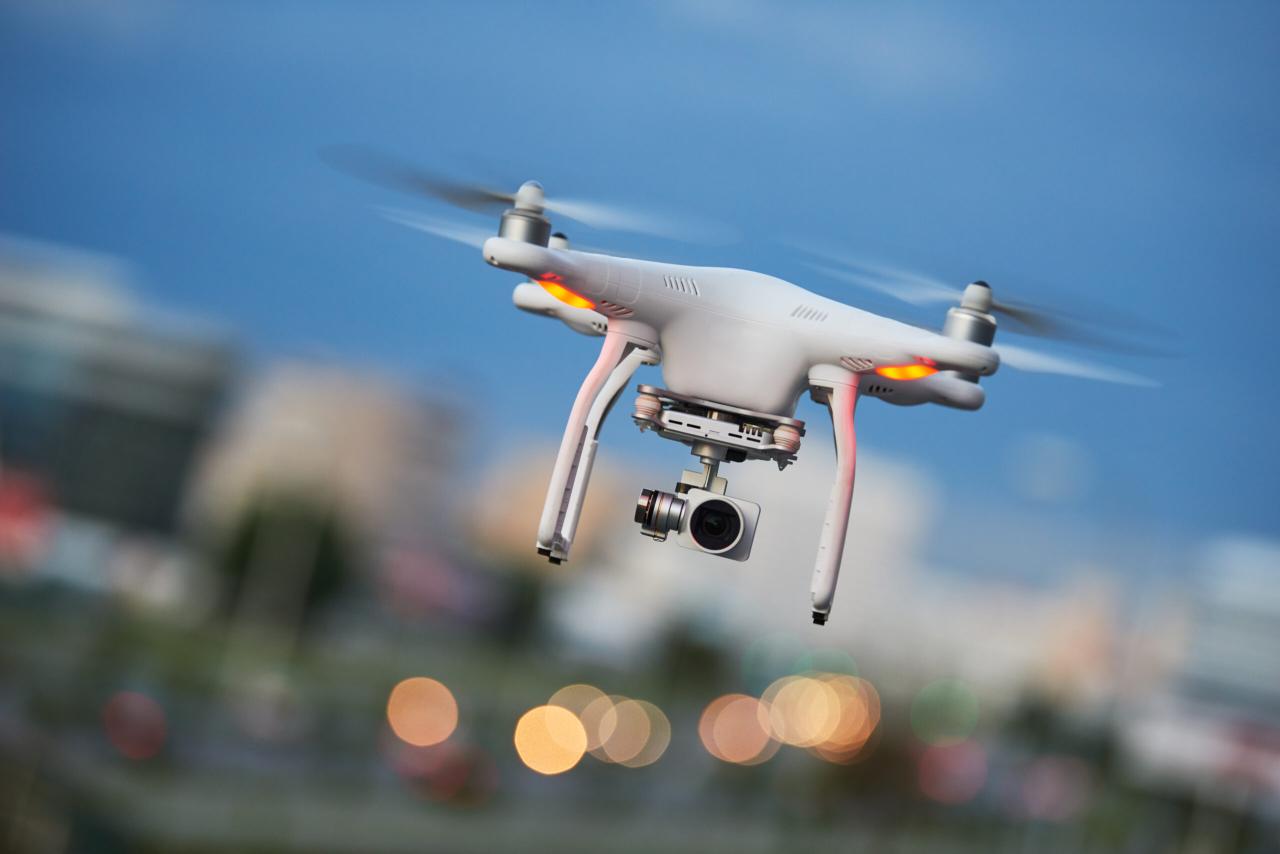
The Orlando drone show accident highlights the critical role technology plays in ensuring safe and successful drone operations. A thorough investigation into the technological aspects is crucial to understanding the root cause and preventing similar incidents. This section details the potential technological failures and their contribution to the accident.
Several technological factors could have contributed to the Orlando drone show accident. These include potential malfunctions within the drone’s hardware or software, inaccuracies in the GPS system used for navigation, and failures in the communication links between the drones and their control system. The interplay of these factors needs careful examination.
Drone Malfunction and Software Glitches
The possibility of a drone malfunction, either mechanical or software-related, must be considered. A mechanical failure could involve a motor, propeller, or other critical component. Software glitches, such as unexpected code behavior or system crashes, could have led to erratic flight patterns or a loss of control. For example, a similar incident in a previous drone light show in another city involved a faulty battery resulting in a mid-air shutdown.
This caused the affected drone to fall from the sky, luckily without causing any significant damage. Analyzing the drone’s flight data logs and conducting a thorough examination of its hardware components are essential for determining if a malfunction occurred.
Drone Flight Path and Deviations
The pre-programmed flight path of the drones is crucial for a successful and safe show. Any deviations from this planned route could have been a significant contributing factor to the accident. A detailed analysis of the drones’ flight data, including GPS coordinates and timestamps, is needed to reconstruct their movements and identify any unexpected maneuvers. For instance, a sudden change in wind speed or direction could have caused a deviation, leading to a collision or an unplanned landing.
This necessitates incorporating robust wind-speed monitoring and adaptive flight path adjustments into future drone show planning.
Drone Communication Systems
The communication systems used to control and monitor the drones are vital for safe operation. These systems facilitate the transmission of commands from the ground control station to the drones and the feedback of real-time data, including position, battery level, and sensor readings. Any disruption or failure in these communication links could have resulted in a loss of control or the inability to respond to unexpected situations.
A loss of signal, for instance, could have left the drones operating autonomously, potentially leading to erratic behavior. The robustness and redundancy of these communication systems are therefore critical. A backup communication system, possibly employing a different frequency or technology, could mitigate the risk of communication failures.
Flowchart of Event Sequence (Drone Perspective)
The following flowchart illustrates a possible sequence of events from the drone’s perspective, assuming a software glitch as the primary cause. This is a hypothetical example and the actual sequence may differ based on the investigation findings.
[Imagine a flowchart here. It would begin with “Drone Initialization,” followed by “Receiving Flight Plan,” then “Executing Flight Plan.” A box representing “Software Glitch Occurs” would branch off, leading to “Loss of Control,” “Erratic Flight,” and finally “Collision/Crash.” A separate branch from “Executing Flight Plan” would lead to “Successful Completion” for drones that didn’t experience a glitch.]
Human Factors
The Orlando drone show accident highlights the critical role human factors play in ensuring safe drone operations. Beyond the technological aspects, the actions and decisions of the individuals involved significantly contributed to the incident’s outcome. A thorough investigation into human error, training, and operational procedures is crucial to prevent similar accidents in the future.
Pilot Experience and Qualifications
The drone operator’s experience and qualifications are paramount in safe drone operation. The level of expertise required for complex operations like large-scale drone shows differs significantly from recreational flying. In this specific case, the investigation should determine if the pilot possessed the necessary certifications, training hours, and experience relevant to managing a large fleet of drones in a public setting.
A detailed review of their flight logs, training records, and pre-flight checklists would help ascertain their preparedness for the task. Insufficient experience or a lack of relevant certifications could have significantly contributed to the accident. For example, a pilot lacking experience with autonomous flight systems or emergency protocols might struggle to react effectively during a malfunction.
Human Error in the Accident
Human error can manifest in various forms, from incorrect pre-flight checks and inadequate risk assessment to poor decision-making during flight and ineffective emergency response. In the context of the Orlando drone show, possible human errors could include neglecting to account for unforeseen weather conditions, failing to adequately test the drone system’s fail-safes, or making a critical error in programming the flight path.
A detailed analysis of the incident’s timeline and the operator’s actions is necessary to pinpoint specific errors. For instance, did the pilot adhere to established safety protocols? Were there communication breakdowns within the operational team? Did the pilot accurately assess and manage risks?
Fatigue and Stress Factors
Fatigue and stress can significantly impair judgment and decision-making abilities, increasing the risk of human error. Long working hours, sleep deprivation, and high-pressure situations can negatively impact a drone operator’s performance. The investigation should consider the operator’s workload, sleep patterns, and overall stress levels leading up to the accident. For example, if the operator had been working extended shifts or had insufficient rest, this could have compromised their ability to respond effectively to unexpected events.
Similarly, the pressure of performing in a high-profile event might have introduced additional stress, potentially leading to mistakes.
Best Practices for Preventing Human Error
Preventing human error requires a multi-faceted approach. Implementing robust training programs that emphasize risk assessment, emergency procedures, and practical flight experience is crucial. Regular competency checks and ongoing professional development are essential to maintain operator skills and awareness of best practices. Standardized checklists for pre-flight inspections, flight planning, and emergency responses can help minimize human error. Clear communication protocols between the pilot and ground crew, along with effective situational awareness, are equally important.
Furthermore, incorporating redundancy into drone systems, such as using multiple communication links or having backup drones, can help mitigate the impact of potential human errors. Finally, incorporating regular simulator training can allow pilots to practice responding to various scenarios without risk of real-world consequences.
Safety Protocols and Procedures
The Orlando drone show accident highlights the critical need for robust and meticulously implemented safety protocols throughout all phases of a drone operation. A comprehensive review of these protocols, comparing them to industry best practices, is essential to understand the contributing factors to the accident and to prevent future incidents. This section details the pre-show, in-show, and post-show safety measures, analyzes their efficacy, and proposes improvements.
Pre-Show Safety Protocols
Before the show, several safety checks were performed, including pre-flight inspections of each drone, verification of GPS coordinates and flight paths, and a thorough risk assessment of the surrounding environment. However, the level of detail in these checks and the training provided to the operators are crucial factors in determining their effectiveness. The pre-flight inspections, for example, may not have been sufficiently rigorous, potentially overlooking a critical mechanical fault.
Hey, so you heard about that crazy Orlando drone show accident, right? It’s a pretty wild story, and if you want the full lowdown, check out this report on the incident: orlando drone show accident. It really highlights the importance of safety protocols in these kinds of large-scale events. The Orlando drone show accident serves as a cautionary tale for future productions.
The risk assessment may have inadequately considered the possibility of unexpected weather changes or interference from other electronic devices.
In-Show Safety Protocols
During the show, the drones were monitored remotely by a team of operators. A communication system was in place to coordinate the drones’ movements and to respond to any unexpected events. However, the effectiveness of the monitoring system, the response time to potential problems, and the redundancy built into the system (i.e., backup operators and control systems) are key aspects to investigate.
The communication system may have experienced a failure, leading to a delayed response to the malfunction. The operators’ training and experience in handling unexpected events may also have been insufficient.
Post-Show Safety Protocols
Post-show procedures included a visual inspection of the drones for damage and a review of flight logs to analyze the show’s performance. However, the thoroughness of these procedures and the actions taken based on the findings are essential for preventing future accidents. A post-incident analysis may have been insufficient, not fully capturing the details of the accident sequence and the reasons for the malfunction.
Furthermore, the procedures for securing the drones after the show may not have been sufficiently robust.
Comparison of Existing and Improved Safety Protocols
The following table compares the existing safety protocols with improved recommendations. It is important to note that these recommendations are based on industry best practices and general safety guidelines, and specific improvements will depend on the specific circumstances of the Orlando drone show.
| Protocol Area | Existing Protocol | Improved Recommendation | Rationale |
|---|---|---|---|
| Pre-flight Inspection | Visual inspection of drones. | Comprehensive checklist-based inspection including functional tests of all systems, and documentation of findings. | Ensures all systems are functioning correctly before flight. |
| Risk Assessment | Basic environmental assessment. | Detailed risk assessment considering weather, radio frequency interference, and potential hazards. Use of specialized software for risk modeling. | Identifies and mitigates potential risks more comprehensively. |
| Redundancy Systems | Single operator per drone. | Multiple operators per drone or group of drones, with a backup control system. | Provides failsafe mechanisms in case of operator error or system failure. |
| Emergency Procedures | Generic emergency response plan. | Detailed, scenario-based emergency procedures with specific actions for various types of malfunctions. Regular drills. | Ensures effective and timely response to unexpected events. |
| Post-Show Analysis | Visual inspection and flight log review. | Thorough post-incident analysis, including data from all sensors, operator interviews, and independent review. | Identifies root causes of accidents and prevents recurrence. |
Public Reaction and Media Coverage
The Orlando drone show accident sparked a swift and multifaceted public reaction, amplified significantly by immediate and widespread media coverage. The event triggered a complex interplay of fear, concern, and debate regarding drone safety and regulations, leaving a lasting impact on public perception of this rapidly evolving technology.The initial response was largely one of shock and disbelief, quickly transitioning into a wave of discussion and analysis across various platforms.
The accident’s visibility and the potential for widespread harm contributed to a heightened sense of unease surrounding the use of drones, especially in public spaces.
Social Media Responses
Social media platforms became immediate hubs for reactions to the accident. Twitter, Facebook, and Instagram were flooded with posts ranging from expressions of concern for the injured to criticism of the organizers and regulatory bodies. Many users shared videos and images of the incident, contributing to its rapid dissemination. A significant portion of the online discourse centered on the perceived lack of adequate safety measures and calls for stricter regulations.
Some social media users expressed skepticism about the reported causes of the accident, demanding transparency and accountability. Conversely, a smaller segment of users defended the use of drone technology, emphasizing its potential benefits when implemented responsibly and with robust safety protocols. The overall sentiment, however, leaned towards a critical assessment of drone safety practices and a demand for improved oversight.
Media Coverage and Biases
News outlets across various media platforms provided extensive coverage of the Orlando drone show accident. Initial reports focused on the immediate aftermath, including the number of injuries and the extent of the damage. As investigations progressed, the media coverage shifted to include analyses of the accident’s causes, focusing on potential technological failures, human error, and regulatory shortcomings. Some news outlets emphasized the potential dangers of drone technology, potentially contributing to a negative public perception.
Others adopted a more balanced approach, presenting both the risks and benefits of drone technology while advocating for enhanced safety regulations. A noticeable bias in some coverage was a tendency to sensationalize the event, potentially exaggerating the scale of the accident or focusing disproportionately on the most dramatic aspects. This sensationalism may have influenced public perception by amplifying anxieties and fears related to drone technology.
Conversely, some media outlets prioritized factual reporting and emphasized the need for a rational and evidence-based assessment of the accident’s implications.
Impact on Public Perception of Drone Technology
The Orlando drone show accident significantly impacted public perception of drone technology. The incident fueled concerns about the safety of drone operations, particularly in densely populated areas. Public trust in the safety regulations and oversight mechanisms governing drone use was also negatively affected. The accident raised questions about the potential for similar incidents to occur in the future, leading to calls for increased scrutiny and stricter regulations.
The widespread media coverage contributed to the public’s awareness of the potential risks associated with drone technology, potentially dampening enthusiasm for its broader adoption. However, it’s important to note that the long-term impact on public perception is complex and will likely depend on the outcomes of the investigation, the implementation of any new safety measures, and ongoing media narratives.
Timeline of Key Media Events and Public Reactions
The following timeline highlights key media events and public reactions following the Orlando drone show accident:
- Day 1: Initial reports of the accident emerge on social media and local news outlets. Videos and images of the incident go viral. Public reaction is characterized by shock and concern.
- Day 2-3: National news outlets begin reporting on the accident. Focus shifts to the number of injuries and the ongoing investigation. Social media discussions intensify, with calls for stricter regulations.
- Day 4-7: Preliminary findings from the investigation are released. Media coverage includes analysis of potential causes, including technological factors and human error. Debate ensues regarding the effectiveness of current safety protocols.
- Week 2-4: Further investigations and expert opinions are shared in the media. Public discourse continues, with some advocating for increased safety measures and others emphasizing the potential benefits of drone technology when used responsibly.
- Month 1-3: The official report on the accident is released, outlining the contributing factors and recommendations for future safety improvements. Media coverage focuses on the report’s findings and their implications for drone regulations.
Lessons Learned and Future Prevention
The Orlando drone show accident, while a significant setback for the burgeoning drone entertainment industry, offers invaluable lessons for enhancing safety protocols and preventing future incidents. A thorough investigation into the contributing factors – encompassing technological limitations, human error, and regulatory gaps – is crucial for establishing a more robust framework for safe drone operations. This analysis should translate into concrete recommendations for both industry practices and regulatory oversight.The accident highlighted several critical areas needing immediate attention.
A comprehensive review of existing safety regulations and their enforcement is paramount. Furthermore, the incident underscored the need for advanced technological safeguards and enhanced operator training programs to mitigate risks associated with large-scale drone displays. Finally, the long-term impact on public perception necessitates proactive measures to rebuild trust and confidence in the responsible use of drone technology.
Improved Drone Safety Regulations
The Orlando incident revealed shortcomings in current drone regulations, particularly concerning the management of large-scale drone shows. Existing regulations may not adequately address the complexities and potential risks associated with synchronized multi-drone operations. Therefore, a review and update of these regulations are essential, focusing on aspects such as flight authorization procedures, emergency response protocols, and the qualification standards for drone pilots involved in large-scale events.
This should include stricter penalties for non-compliance to act as a deterrent. For example, regulations could mandate the use of redundant systems and fail-safes in drone designs and operational procedures. The introduction of mandatory, regularly updated risk assessments for each drone show, vetted by independent safety experts, could also prove beneficial.
That Orlando drone show accident got everyone talking about safety regulations, right? It makes you wonder about the unknown factors involved, like what happened with that whole mystery drone paris incident – was it a similar technical malfunction or something else entirely? Thinking about those unexplained events really highlights the need for better oversight in drone operations to prevent future Orlando-style mishaps.
Enhanced Technological Safeguards
Technological advancements can significantly enhance drone safety. The accident underscores the need for improved fail-safe mechanisms in drone systems. This includes robust GPS redundancy, collision avoidance systems, and automated emergency landing capabilities. Furthermore, research and development efforts should focus on developing more reliable communication systems that are less susceptible to interference or signal loss, a potential factor in the Orlando accident.
Imagine a system that allows for real-time monitoring of each drone’s status, battery level, and position, feeding data into a central control system capable of issuing automated corrections or emergency commands. This level of technological sophistication would significantly reduce the risk of accidents.
Advanced Operator Training and Certification
Human error often plays a significant role in accidents. The Orlando incident highlights the necessity for more rigorous training and certification programs for drone pilots, especially those involved in complex operations like large-scale shows. These programs should go beyond basic flight instruction and encompass advanced topics such as risk assessment, emergency procedures, and the management of unexpected events.
Regular proficiency checks and continuing education would ensure that pilots maintain the highest levels of competence. Consider a tiered certification system, with higher levels requiring more extensive training and experience for increasingly complex operations. This would create a more skilled and responsible workforce.
Long-Term Impact on the Drone Industry
The Orlando drone show accident will undoubtedly have a lasting impact on the drone industry. It will likely lead to increased scrutiny of safety protocols, stricter regulations, and a heightened focus on risk mitigation. This could result in slower growth in certain sectors, particularly in the entertainment industry, as companies prioritize safety and regulatory compliance. However, the accident also presents an opportunity for the industry to demonstrate its commitment to responsible innovation and to rebuild public trust.
By implementing the lessons learned and proactively addressing safety concerns, the drone industry can emerge stronger and more resilient, setting a higher standard for safe and responsible drone operations globally. The long-term success of the industry hinges on its ability to learn from this accident and to build a culture of safety that prioritizes risk mitigation above all else.
Illustrative Description of the Accident Scene
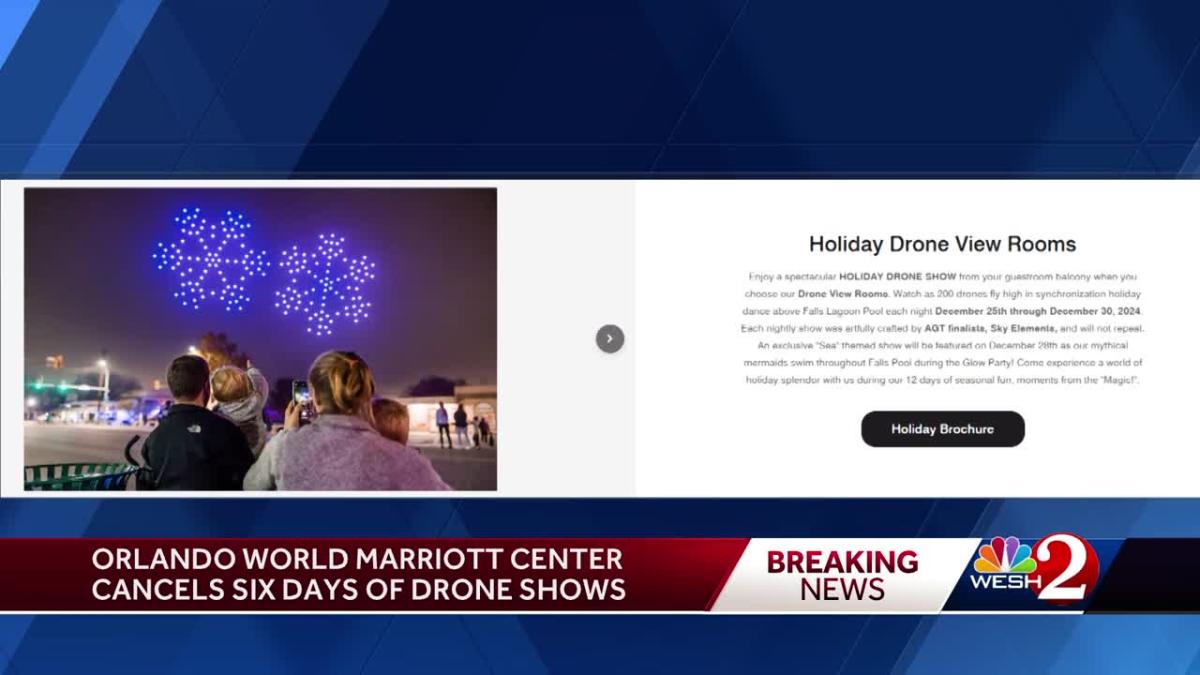
The accident occurred in a relatively open area, a public park bordering a residential neighborhood. The evening was transitioning into night, with a dusky twilight still clinging to the sky. The ambient light was a mixture of fading daylight and the gradually increasing illumination from nearby streetlights and house lamps. The weather was calm, with a gentle breeze, and the air was clear, lacking any significant fog or haze.The drone, a large, multirotor model, had apparently malfunctioned during a pre-programmed light show.
The area immediately surrounding the crash site was a gently sloping lawn, dotted with mature trees. These trees, their leaves mostly still clinging to branches despite the approach of autumn, provided some visual obstructions, although the overall area was fairly open. Closer to the crash site, several picnic benches were scattered around, some unoccupied, others bearing the remnants of evening meals – discarded napkins and half-empty drink containers.
The ground itself was largely composed of short-cut grass, slightly damp from the earlier evening’s dew. The immediate vicinity of the impact zone showed a small patch of disturbed earth, suggesting the force of the drone’s fall. The remnants of the drone itself were spread across a radius of several feet, broken pieces of plastic and metal scattered amidst the grass.
Drone Debris Distribution
The drone’s wreckage was not concentrated in a single point. Instead, it was spread out in a roughly circular pattern, indicating a likely loss of control just before impact. Larger components, such as the motor housings and battery casing, lay closer to the center of the impact zone. Smaller fragments, including pieces of the frame and propeller blades, were flung further outward, some even snagged in the branches of nearby trees.
The overall impression was one of significant impact force, with the drone disintegrating upon collision with the ground.
Surrounding Environment and Visibility
The surrounding buildings were relatively low-rise, single-family homes, with well-lit yards. These houses offered a degree of background illumination, but did not significantly interfere with the visibility of the drone during its flight or in the aftermath of the crash. The area lacked any particularly tall structures or significant obstacles that might have played a role in the accident.
The overall lighting conditions, while not bright, were sufficient to provide adequate visibility, especially considering the relatively close proximity of the streetlights.
Closure
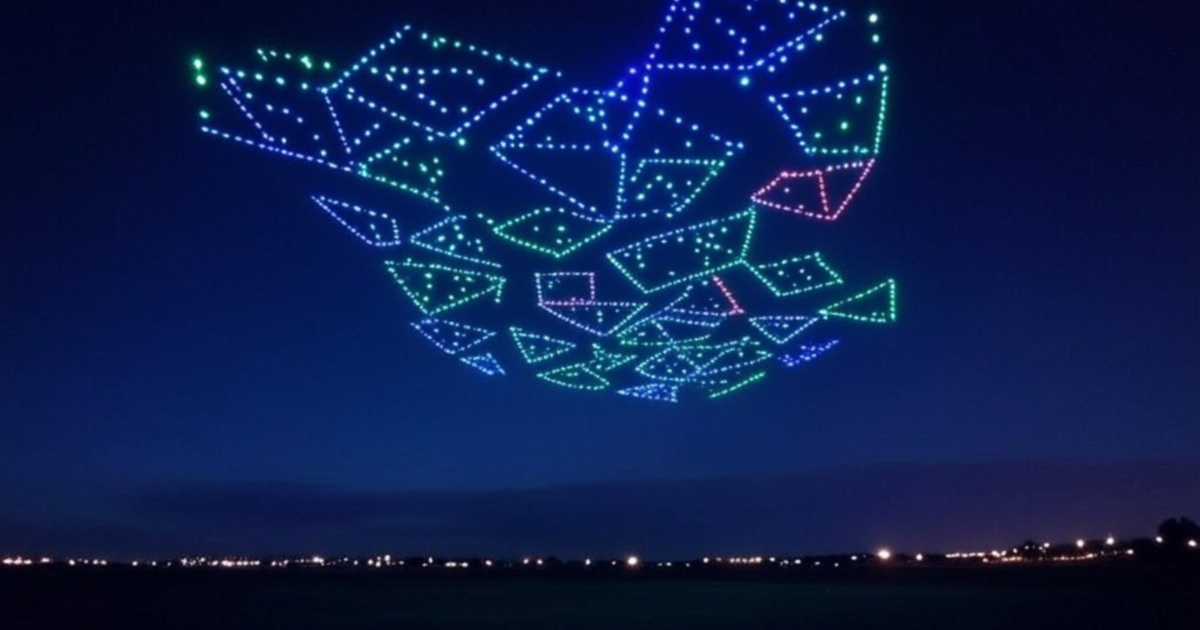
The Orlando drone show accident serves as a stark reminder of the potential risks associated with drone technology, highlighting the critical need for robust safety protocols, thorough operator training, and rigorous regulatory oversight. By understanding the factors contributing to this incident, we can collectively work towards a future where drone shows and other drone operations are conducted safely and responsibly, minimizing the potential for similar accidents.
Questions and Answers
What type of drones were involved?
This information will be detailed in the main body, specifying make, model, and any relevant technical specs.
Were there any witnesses to the accident?
The investigation will likely include witness testimonies, which will be discussed.
What was the total cost of the damages?
A precise financial assessment of the damages will be provided in the section detailing injuries and damages.
What legal actions, if any, are being taken?
Details on any ongoing legal proceedings will be included, if available.
